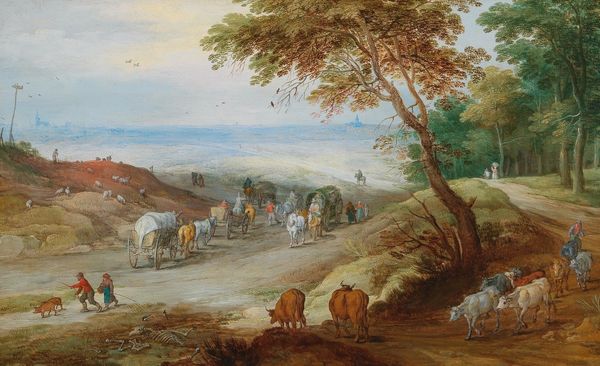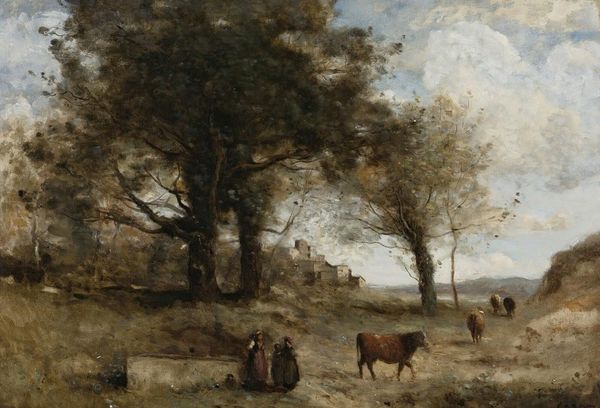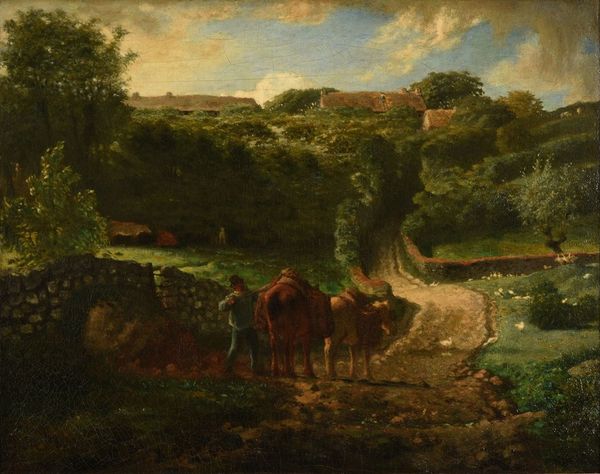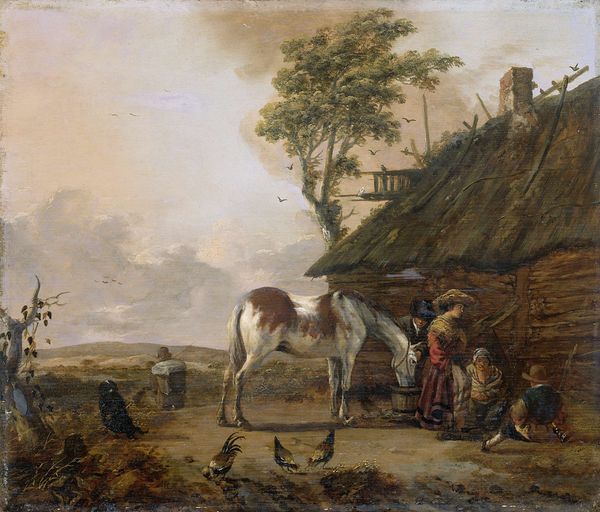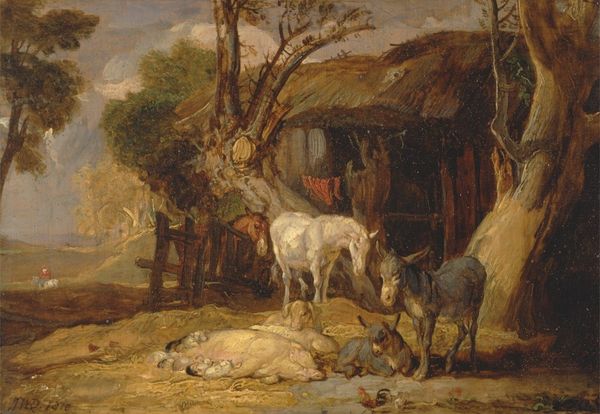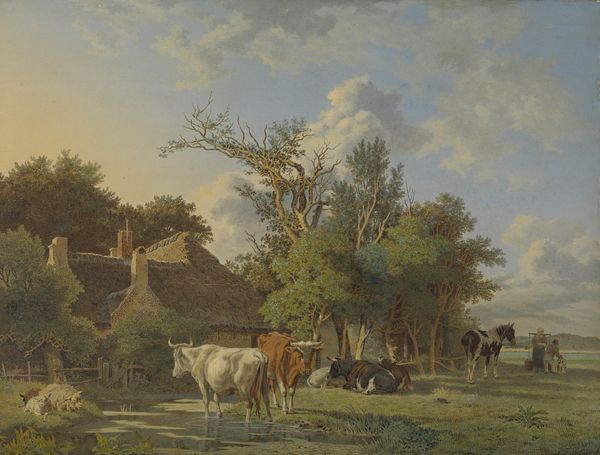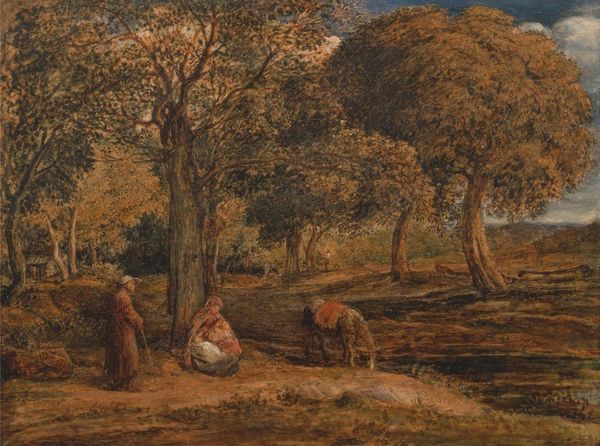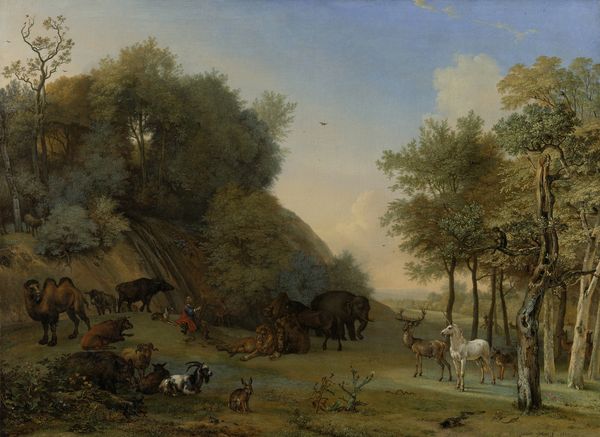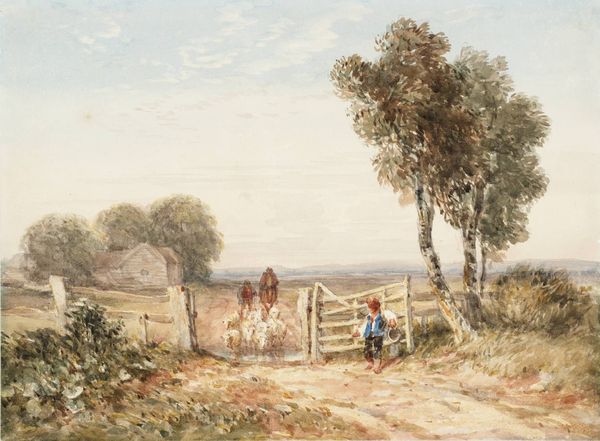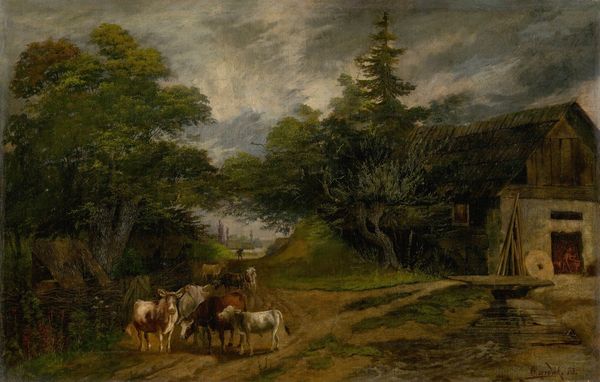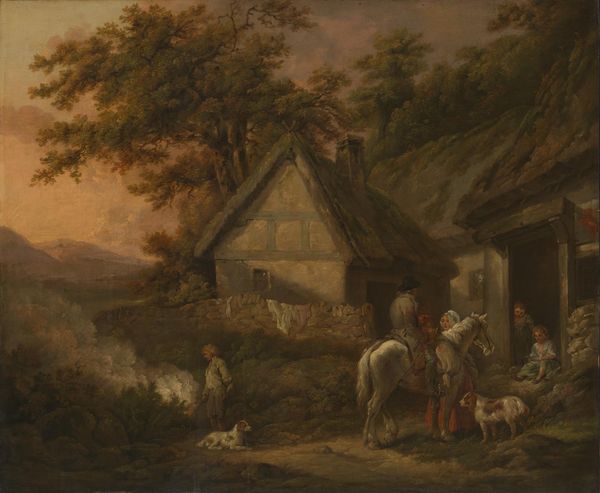
painting, plein-air, oil-paint
#
painting
#
plein-air
#
oil-paint
#
landscape
#
oil painting
#
romanticism
#
genre-painting
Copyright: Public Domain: Artvee
Curator: This is John Linnell’s, A View Near Hampstead, completed in 1827. It’s an oil painting done, quite notably, en plein air. Editor: It feels idyllic, yet also strangely…contained. The subdued color palette gives it a grounded feel, almost like looking at a memory. It's predominantly browns and greens. Curator: Observe how Linnell structures the composition. He meticulously positions the trees as framing devices, subtly guiding your gaze inward, drawing your eye to the figures and buildings. Editor: Those figures do add an interesting dimension. Are they symbolic? It almost feels like an archetypal depiction of rural family life. Curator: It's genre painting merging seamlessly with landscape. These touches echo the Romantics' yearning for the simpler rhythms of rural life. Remember, this was painted during a period of immense urban expansion and industrial change. Editor: And painting it outside surely was very relevant as he really intended to reflect the atmosphere of those places. The figures look like representing rural classes as opposed to urban people. The setting and these humble characters are making us appreciate this social dynamic. Curator: Precisely. There’s a narrative at play too, though it’s understated. The winding path suggests a journey. Also, you can appreciate the influence of early photography that already at those times would shape painter's vision on their models. Editor: Yes, photography was slowly altering how we looked at the world. This piece presents almost a perfect picture-like composition. The tonal harmony definitely gives the composition stability. Curator: Linnell was making a subtle statement about the enduring quality and the authenticity of British rural life against a changing world. Editor: This painting makes me reconsider how we often perceive “genre paintings.” It challenges assumptions about how artists reflect their times. Curator: And it prompts questions about how landscape as a medium is about an ideology, far more than representing an actual place. Editor: Ultimately it reveals the quiet dignity in an artist's choice of composition as a form of historical commentary.
Comments
No comments
Be the first to comment and join the conversation on the ultimate creative platform.
